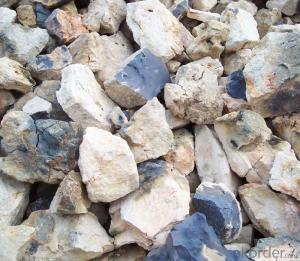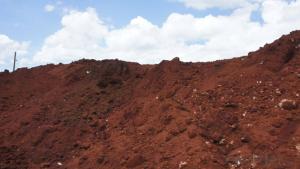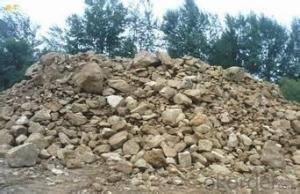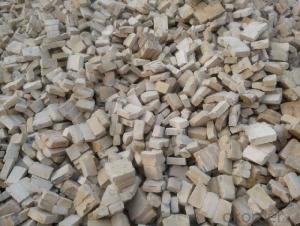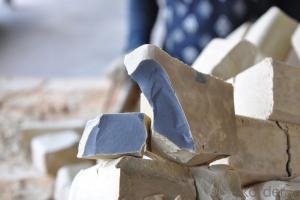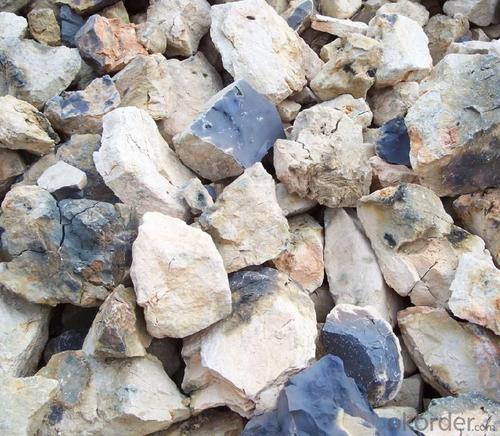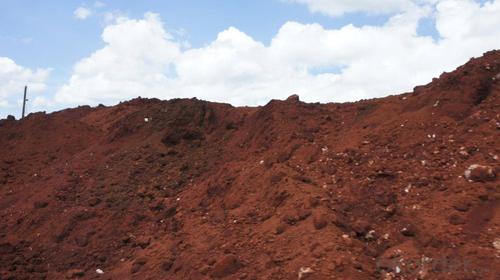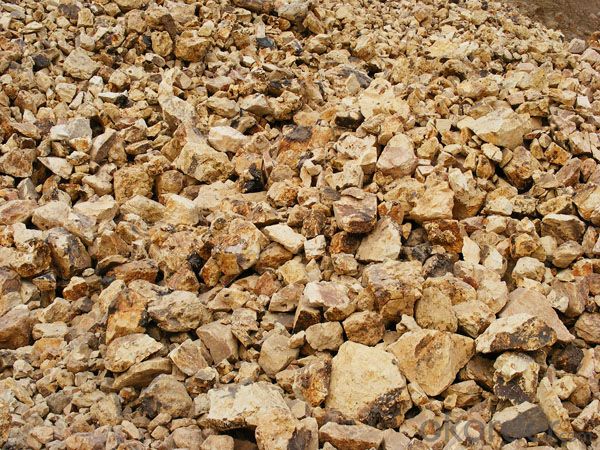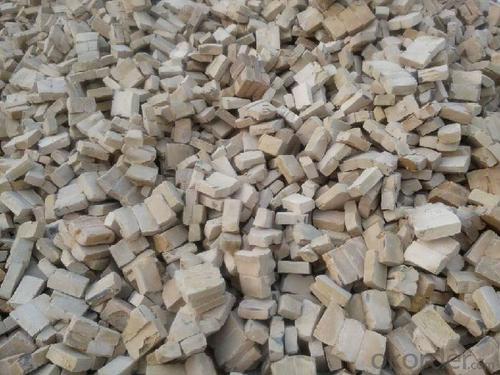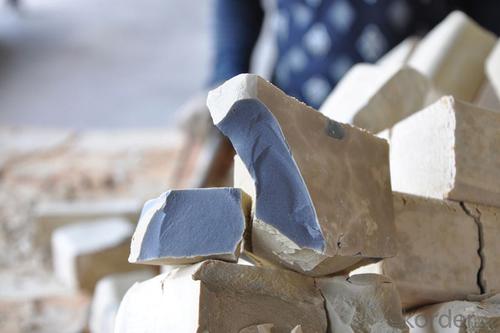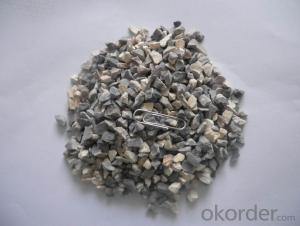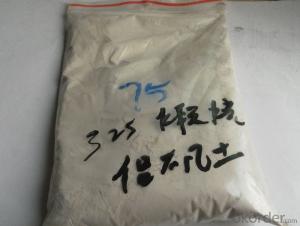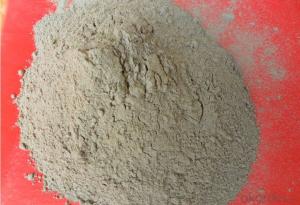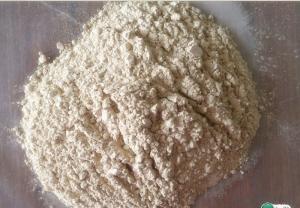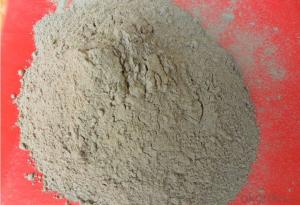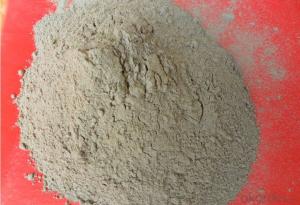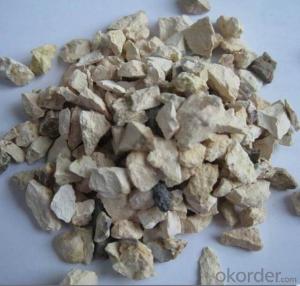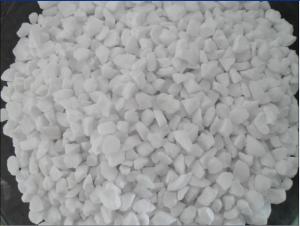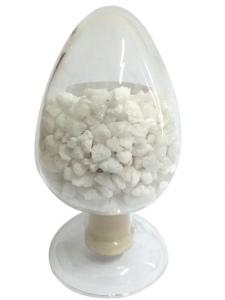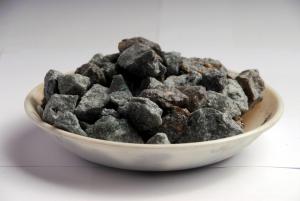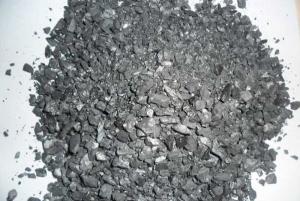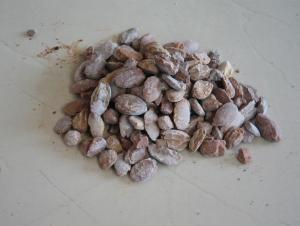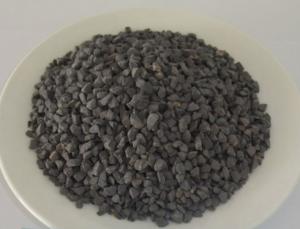Raw Materials for Refractory:Calcined Bauxite with 50/55/65/70/75/80/85/86/87% Alumina Content
- Loading Port:
- Tianjin
- Payment Terms:
- TT or LC
- Min Order Qty:
- 25 m.t.
- Supply Capability:
- 12000MT/MONTH m.t./month
OKorder Service Pledge
OKorder Financial Service
You Might Also Like
Calcined Bauxite 50/55/65/70/75/80/85/86/87% Alumina Content High Quality
1.Calcined Bauxite Description
bauxite, alumina or bauxite miner , main ingredients are aluminum oxide, hydrate alumina containing impurities,
is an earthy mineral.White or grey, brown yellow or light red by iron.From 4 to 3.9 g/cm3 density, hardness, 1 ~ 3, opaque, very brittle.
Very difficult to melt.Insoluble in water, soluble in sulfuric acid, sodium hydroxide solution.Mainly used for aluminium, refractory material.
2.Main Features of Calcined Bauxite
Calcined bauxite is one of the principal ore of aluminum. Calcined bauxite contains hydrous aluminum oxides and aluminum
hydroxides, formed through the laterization of aluminous rocks in tropical and subtropical areas .Calcined bauxite is obtained by calcining (heating)superior grade bauxite at high temperature (from 85OC to 1600C) .This removes moisture there. By increasing the alumina content,compared to an alumina content of about 57%to 58% in raw bauxite, calcined bauxite has an alumina content of 84%to88%.The heating is carried out in rotary kilns.
3.Main usages of Calcined Bauxite
1. aluminium industry.
2 . precision casting.
3. for refractory products.
4. aluminum silicate refractory fiber.
5. with magnesia and bauxite clinker as raw material, add appropriate binder, used for pouring ladle whole ladle lining has particularly good effects.
6. manufacture alumina cement, abrasive materials, ceramic industry and chemical industry of aluminum compounds
4. Calcined Bauxite Images
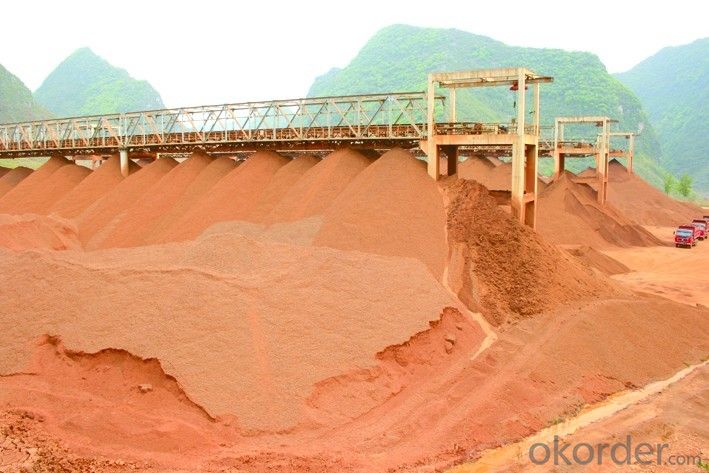
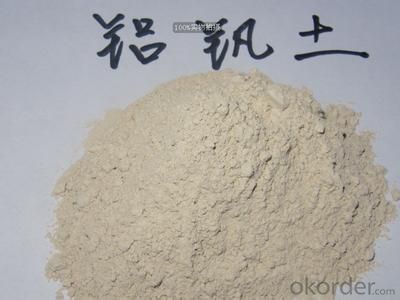
5. Calcined Bauxite Specification
| Place of Origin: | Henan, China (Mainland) | Shape: | Powder, powder | Material: | Alumina Cement |
| SiO2 Content (%): | ≤0.5 | Al2O3 Content (%): | ≥78 | Refractoriness (Degree): | Common (1580°< Refractoriness< 1770°) |
| Model Number: | DRHCA | Brand Name: | CNBM | Name: | refractory cement |
| Application: | steel foundry | Fe2O3: | ≤0.5 | R2O (Na2O+0.658K2O): | ≤0.4 |
| Final time: | ≤360 | Initial time: | ≥30 | Port: | Tianjin ; Qingdao ; Lianyungang |
| Delivery time: | 10-30 days | Refractoriness: | 1580℃ - 1770℃ |
6.FAQ of Calcined Bauxite
1). Q: Are you a factory or trading company?
A: We are a factory.
2). Q: Where is your factory located? How can I visit there?
A: Our factory is located in ShanXi, HeNan, China. You are warmly welcomed to visit us!
3). Q: How can I get some samples?
A: Please connect me for samples
4). Q: Can the price be cheaper?
A: Of course, you will be offered a good discount for big amount.
- Q: What's the maximum temperature that the high-temperature resistant refractory ceramic fiber cotton can endure?
- Nichrome wire, stainless steel wire and glass fiber are reinforced. Ceramic fiber coating cloth and slag cloth, sintering ceramic fiber cloth and ceramic fiber fumigation cloth) Characteristics of the ceramic fiber cloth: high temperature resistance, low heat conductivity, thermal shock resistance, low thermal capacity; superior insulating property at high temperature, long service life; resistance to nonferrous metals like molten aluminum and zinc erosion; low and high temperature strength; innocuity with no adverse effect on the environment; Applications of ceramic fiber cloth: It can be applied to the thermal insulation of all kinds of furnaces, high-temperature pipelines and vessels; furnace doors, valves, flange seal, fire doors, fire resisting shutters and high-temperature furnace door curtains; engine and instrument insulation, clad material of fireproof cables, and high-temperature resistant and fire-proof materials; thermal insulation cloth for coverage, high-temperature expansion gap padding, and inner linings of the flue; high temperature resistant labor safety products, fireproof suits, high-temperature filtration and sound absorption, replacement of asbestos, etc.
- Q: Procedures for producing common refractory materials?
- The general procedures of producing refractory materials include calcination of raw materials, selection of raw material , crushing, grinding, screening, mixing, ageing mixture, molding, drying, burning and etc. At present, the refractory factory usually purchases the calcined clinker, so the calcination of raw material is no longer a consideration of common refractory plants.
- Q: whether the fire resistant level of aerated concrete building blocks can reach the grade one?
- it has fire resistant level, incombustible?material,and it should reach grade one level.
- Q: who knows the uses of refratories?
- Physical properties of refractories include structural properties, thermal properties, mechanical properties, usability and operation. structural properties of refractories include porosity, bulk density, water absorption, air permeability, pore size distribution. Refractory thermal properties include thermal conductivity, thermal expansion coefficiency, specific heat, heat capacity, thermal diffusivity, thermal emissivity. Mechanical properties of refractories include compression strength, tensile strength, anti bending strength, torsional strength, shear strength, impact strength, abrasion resistance, creep property, adhesive strength, modulus of elasticity. Refractories are used in various fields of steel, nonferrous metals, glass, cement, ceramics, petrochemical, machinery, boilers, light industry, power, military and other fields of national economy. They are essential materials that ensures the production run and technological development of the above industries, and play an important role in promoting the developemnt of high temperature industrial production. the usability of refractories include refractoriness, softening temperature under a fixed load, linear?change?on?reheating,thermal shock resistant performance,slag resistance, acid resistance, alkali resistance, hydration resistance, carbon monoxide resistance, conductivity, oxidation resistance.
- Q: What's the refractoriness and how to measure the refractoriness?
- Bottom each side length is 8 mm and upper side length is 2 mm. Under a certain temperature-rising speed, when heating, refractory's resistance to high temperature from melting is called refractoriness. The properties of cross section into an equilateral triangle and height is 30 mm. When it bends down until the vertex and chassis contact temperature is the refractoriness of sample. It bends due to the influence of its weight. Make the will-measured material into standard pyrometric cone.
- Q: The performance of refractory material
- The mechanical properties of refractory material include withstand voltage strength. The structure properties of the refractory materials include porosity, bulk density, such as thermal emission rate. The physical properties of the refractory materials include temperature conductivity structure performance, wear resistance, hiphotos, electrical conductivity, creep, the hydration resistance, adhesive strength.
- Q: What are the requirements when producing fireproof materials by kaolin?
- . Kaolin are kaolinite crowded mineral composed of tiny flakes tubulose, lamellar smaller than 2 microns. it is composed of kaolinite, dickite, pearl stone, halloysite etc. I chemical formula of which is AL2O3-2SiO2-2H2O, the main mineral component is kaolinite and halloysite. Except kaolinite and halloysite there are other minerals montmorillonite, illite, pyrophyllite, quartz and feldspar associated. kaolin contains large amounts of the chemical composition AL2O3, SiO2, and a small amount of Fe2O3, TiO2, and small amounts of K2O, Na2O, CaO and MgO, etc. white pottery is made of kaolin and is now internationally accepted scientific name --Kaolin, derived from the eastern suburb of Jingdezhen high-Village side of the mountain kaolinite. kaolin plasticity, cohesiveness, certain dry strength, sinterability and whiteness after burning, making it the main raw material for ceramic production;. white, soft, highly dispersed, adsorption and chemical resistance with other excellent process performance, it has been widely used in the paper industry as well as industrial sectors such as agriculture and defense cutting-edge technology in the field of rubber, plastics, refractories, petroleum refining . according to the purpose and need, it can be processed, treated and purified, they can be used to produce activated clay.
- Q: what is steel fire door made of ?
- 1. fire resistance steel door has steel made door frames, door leaf framework and door panels. if the door leaf is filled with nontoxic fire insulation material, added with fireproof hardware accessories, which consists of a door that is fire resistance. 2. Category 1)safety facilities to prevent underground building from fire expansion and control volatilation. It is usually divided into steel and wooden fire door. 2) Class A fire doors, fire endurance of 1.5 hours; B fire doors, fire endurance of 1.0 hours; Class C fire doors, fire endurance of 0.5 hours. 3) In fact, there are many types of fire doors. For example, there are wooden made fire doors glass fire doors and steel fire doors based on different materials. access control fire doors, entrance fire resistance door, interior fire doors, explosionproof and fireproof door, quick-lock fireproof doors, quick opening door encountered with fire and multi-functional fire doors. 4) Based on the installation location: External fire doors and built-in fire doors. 5) divided by technology: Electronic fire doors.
- Q: What are the advantages of refractory material?
- Jingute WHL type, GDS type
- Q: What are the grades of refractory exterior wall thermal insulation materials?
- Classification of fire rating of extrior thermal insulation materials 1, According to national standard GB8624-97, the combustion performance of building materials are divided into the following grades A level: Incombustible building materials: Materials hardly burn. B1 class: Flame-retardant building materials: Flame-retardant material has good flame resistance. In case of fire in the air or at high temperature, it is difficult to catch fire and the fire will not spread quickly. And when the combustion source is removed, the burning will stop immediately. B2 Class: Combustible building materials: Combustible materials have a certain flame retardancy. In case of fire in the air or at high temperature, it will immediately burst into flames and it is easily to spread fire, such as wooden column, wooden roof truss, wooden beams and wooden stairs, etc. B3 level: Inflammable building materials: It has no flame retardant effect, and it is extremely inflammable, and the risk of fire is high. Classification of exterior wall thermal insulation materials according to fire rating: 1. Thermal insulation materials with A-level combustion performance Rock wool, glass wool, foam glass, foamed ceramic, foam cement, hole-closed perlite, etc. 2, Thermal insulation materials with B1-level combustion performance: Extruded polystyrene board (XPS) after special treatment / polyurethane (PU) after special treatment, phenolic aldehyde, gelatine powder polystyrene granule, and etc. 3. Thermal insulation materials with B2-level combustion performance: Molded polystyrene board (EPS), extruded polystyrene board (XPS), polyurethane (PU), polyethylene (PE), etc.
Send your message to us
Raw Materials for Refractory:Calcined Bauxite with 50/55/65/70/75/80/85/86/87% Alumina Content
- Loading Port:
- Tianjin
- Payment Terms:
- TT or LC
- Min Order Qty:
- 25 m.t.
- Supply Capability:
- 12000MT/MONTH m.t./month
OKorder Service Pledge
OKorder Financial Service
Similar products
Hot products
Hot Searches
Related keywords
